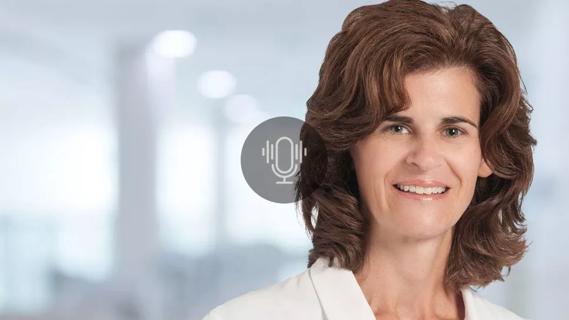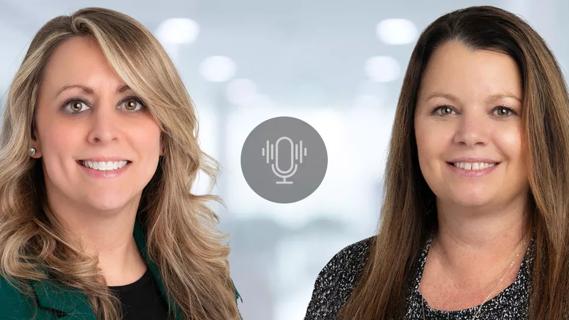Advertisement
Program helps facilitate population management

When patients have questions about their health — whether it’s concerning a rash that won’t go away or chest pains that have just started — it can be reassuring to talk to a nurse. That was the impetus behind Cleveland Clinic’s Nurse on Call program when it was launched in 1991.
Advertisement
Cleveland Clinic is a non-profit academic medical center. Advertising on our site helps support our mission. We do not endorse non-Cleveland Clinic products or services. Policy
Today, this dynamic program draws more than 150,000 patient calls each year, making Nurse on Call uniquely positioned to impact patient care. It is now being integrated into the care coordination team strategy, with the goal being to impact transitions of care and population health management.
This year, Nurse on Call has undergone several enhancements to drive it to its ideal state. Among the enhancements are the adoption of a new software system and the use of the Schmitt-Thompson triage guidelines (explained below).
Patients can contact a nurse through the program 24 hours a day, 365 days a year. Nearly 20 outpatient Cleveland Clinic facilities and many provider groups rely on the Nurse on Call program. Providers who contract with the program include primary care, family medicine, internal medicine, pediatrics and other selected specialties.
“It provides connectivity between patients and their healthcare providers by offering after-hours telephone triage and access to nurses when providers are not available,” says Cari Gump, BSN, RN, Nurse Manager for Nurse on Call. During the day, more than 30 nurses associated with the program collaborate with the centralized scheduling unit to support patients calling with urgent needs. After hours, provider offices transfer incoming calls to the Nurse on Call program. Nurses determine the reason for each call and proceed with triage.
“By providing access to highly skilled nurses who are connecting with physicians, we impact patient experience — especially since we are open every day of the year, all day and night,” says Kelli Chovanec, MSN, RN, Senior Nursing Director, Care Coordination Integration. Nurses come from a variety of backgrounds, with many years of expertise at Cleveland Clinic in emergency departments, ICUs, step-down units and other areas.
“Nurse on Call nurses draw on their experience to assess patient needs and guide patients to the correct recommendation,” says Chovanec. “And to ensure quality of care, nurses can connect patients with the right provider by using the ‘care team’ tab built into the documentation software.” This allows nurses to review care plans and collaborate with care coordinators and/or providers, either by phone or by routing documented triage encounters via Cleveland Clinic’s electronic medical record.
Advertisement
Earlier this year, the Nurse on Call program adopted the Epic Nurse Triage system. Previously, nurses and support staff relied on two systems. They used one software package to capture the patient’s demographic information, perform triage and complete documentation, which was separate from the electronic medical record. “The process is now streamlined and more efficient,” says Gump. “There’s no toggling back and forth for documentation purposes.” Using Epic Nurse Triage has “really enhanced the visibility and connectivity with the ambulatory team — the primary care physicians and care coordinators,” says Chovanec.
The Schmitt-Thompson guidelines, which are embedded in the Epic Nurse Triage system and guide nurses’ telephone conversations with patients, are the gold standard in telephone triage care. The guidelines include symptom definitions, assessment questions and care advice for more than 600 symptom-based topics. For instance, if a parent calls because a child has an earache, the nurse is prompted to ask initial assessment questions such as “Does your child have a runny nose or cough?” The triage assessment assists nurses in providing care advice. For example, after ruling out symptoms of a more serious nature, the nurse will recommend a time period within which the child needs to be evaluated and facilitate an appointment and/or access point to see a provider. The nurse will then review home care instructions with the parent to provide care for the child in the interim.
“It is very exciting for us to be able to promote nurse autonomy. Guidelines allow nurses to function at the top of their licensure,” says Gump. “There’s a lot of room built in for nurses to use clinical judgment.” For example, nurses use critical thinking skills to determine whether they have received adequate information, whether they need to ask additional questions, whether care suggestions seem appropriate, and if necessary, where and when patients need to be evaluated.
“Part of what we’re doing to enhance the patient experience is making sure patients are seen at the right place, at the right time, and with the correct level of care,” says Gump. “We are very knowledgeable on the various access points within our organization — hospitals, urgent care clinics, walk-in clinics and Express Care Online virtual visits.”
The combination of skilled nurses using updated technology and triage guidelines and the focus on partnership with the integrated care team ultimately benefits patients. One recent example involved an elderly woman who called to ask about chest pain and other general symptoms. “Based on the complete picture and what she heard, the nurse felt it was imperative that the patient go to the emergency department (ED) to be evaluated,” recalls Gump. “The patient let us know afterward that she was very grateful to the nurse for sending her to the ED because she had had a cardiac event.”
Between January and June of 2016, Nurse on Call nurses received more than 73,200 calls from patients. These were the most common symptoms cited:
Advertisement
Advertisement

Education, training and reporting can help reduce workplace violence in healthcare

Wound, ostomy and continence nurses provide skin assessments, wound prevention measures, treatment and education

Virtual model enables around-the-clock management of common acute conditions

Resources, education, mentoring help nurses segue to formal leadership roles

Holistic nurses work across all nursing specialties to support patients and caregivers

Nurses play pivotal role in patients’ ability to recover in the comfort of their own homes

Advocating for patient safety is imperative in fast-paced surgical settings

Advice for those pursuing a WOC nursing career